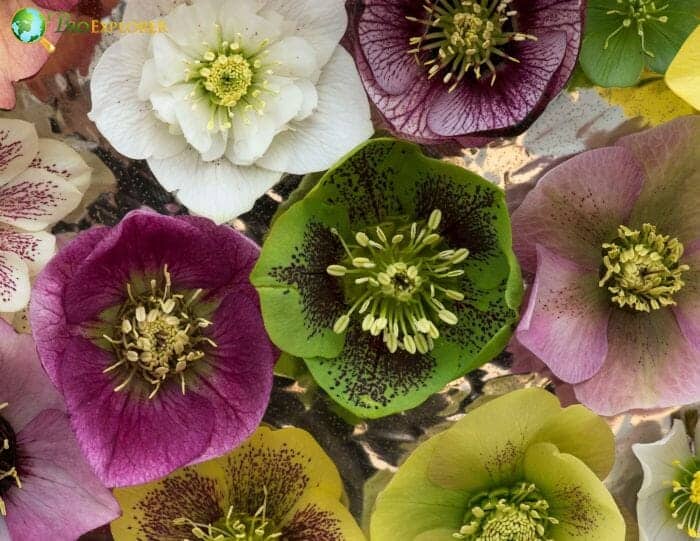
Hellebore is so pretty and straightforward that it has a place in almost any landscape. Its exquisite cup- or saucer-shaped blooms in white (sometimes speckled), maroon, yellow, or pink remain on the plant for many months, even after the petals have dropped.

Hellebore, Helleborus orientalis, belongs to the large Ranunculaceae family with about 20 species[1] and several subspecies. Hellebore, commonly known as the Lenten rose, is a perennial clustered plant that grows 1 to 1.5 feet tall in late winter.

It has large, cup-shaped flowers, generally angled (3 to 4″ in diameter) with central crowns of highly contrasting yellow stamens.

Flowers generally appear in clusters of 1 to 4 on thick stalks that rise above the foliage. The leaves are webbed, serrated, leathery, 8-16″ wide, glossy, basal, and dark green (7-9 leaflets).

It blooms in late winter (often when there is still snow) and continues through spring, with a long flowering period of 8 to 10 weeks. The roots, stems, and leaves are poisonous.

















